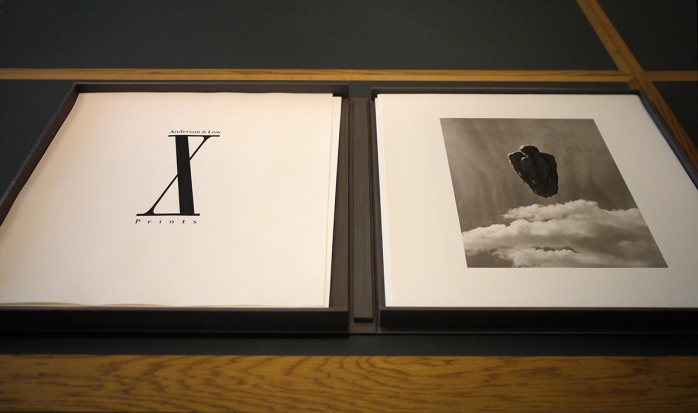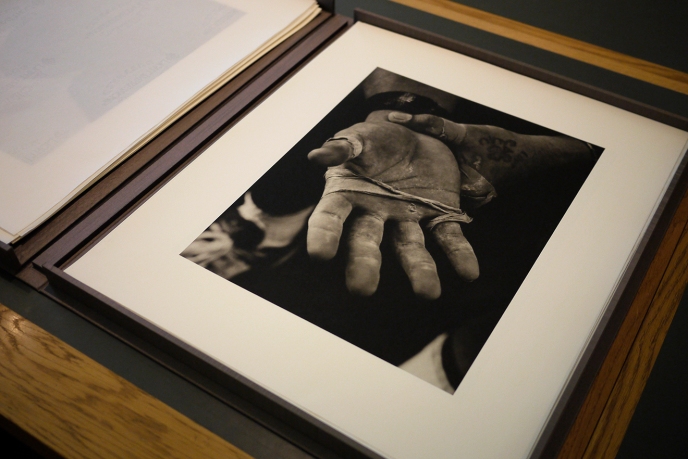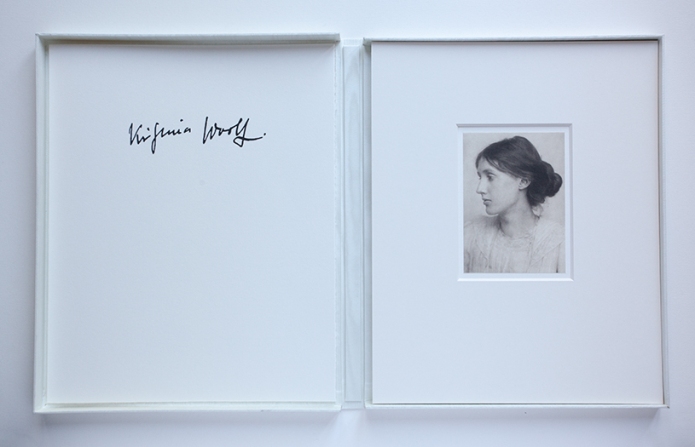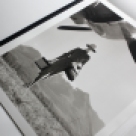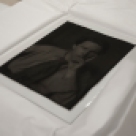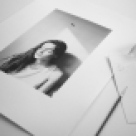Robert Mapplethorpe – Platinum on Canvas
September 20, 2014
Following on from my recent posts looking at different substrates used for platinum printing over the years I recently came across one of Robert Mapplethorpe’s images of Andy Warhol printed in platinum on canvas, which sold at auction in 2006 for $643,000, making it one of the most valuable platinum prints to have been created in the modern era.

ROBERT MAPPLETHORPE (1946-1989)
Andy Warhol, 1987
unique platinum print on Canvas/linen with 4 silk panels
overall 42 x 42in. (106.7 x 106.7cm.)
This unique print was created by master platinum printer Martin Axon in 1987, who printed many of Mapplethorpe’s platinum prints before his death in 1989. In an upcoming post I will be talking to Martin about what it was like to work with Mapplethorpe and also details about printing on such a substrate as canvas.
Additional Details about the print when it was sold at auction
‘In 1987, Robert Mapplethorpe mounted an exhibition at the Robert Miller Gallery of photographic constructions – single panel, diptychs and triptychs of platinum prints on linen or canvas which were often accompanied by a panel of silk and then put into frames also designed by Mapplethorpe. The exhibition was mentioned in the following excerpt from an article by Andy Grundberg in The New York Times:
‘Suddenly, it is no longer enough for a photograph to be a picture of something. For a photograph to succeed in the art world, all the signs this spring suggest, it needs to be an object. And the more elaborate, the better.
Robert Mapplethorpe’s photographs, now on view at the Robert Miller Gallery 1 (41 East 57th Street, through May 23), are a case in point. Printed on linen cloth using the archaic platinum process, they are mounted on stretchers, like paintings, and float within frames of thick, black wood. More often than not they are flanked by a panel (sometimes two) of understated but luxurious fabric. The resulting diptychs and triptychs recall Minimalist painting more than they resemble photographs.’ (The New York Times, May 3, 1987, p. H29)
Coincidentally, in 1986, shortly before Andy Warhol’s death, an exhibition (the last of his work during his lifetime) of stitched photographs was also exhibited at the Robert Miller Gallery. Subsequent to that exhibition, Mapplethorpe took Warhol’s portrait after which this, perhaps the most complex – in all senses – of the unique works from this period was created and exhibited in 1987.
In an interview with Janet Kardon at that time, Mapplethorpe pointed out:
‘I don’t think I would have done what I’ve done if Warhol had not appeared as an influence at some time. … I think I was subconsciously influenced by Warhol. I couldn’t have not been – because I think he’s the most important pop artist – but I’m not sure how.’
The present lot, Andy Warhol, was purchased from the Miller Gallery exhibition at that time by the current owner. It is perhaps the most important work by Mapplethorpe to come up for public sale to date, given the artists’ relationship and the role that they both played subsequently in the development of art history.’
Platinum Print Portfolios
September 19, 2014
With a number of co-publishing projects on the go and set for release in 2015 under our studio’s imprint ‘Platinum Print Editions’, I am always interested in viewing portfolios of platinum prints by different artists, not only to see how they look in person but also how they are presented. For me a portfolio of platinum prints is an ideal way to view and own a coherent set of an artist work. They can either be framed or viewed without obstruction of glass in ones hands, my preferred way of viewing platinum prints.
A few weeks ago I visited the V&A to view a set of platinum prints by Anderson & Low that recently had been acquired by the museum. I have been following their work ever since I was drawn to their large scale architectural imagery at ‘The Photographer’s Gallery’ in London some 10 years ago.
Both Jonathan Anderson and Edwin Low have been collaborating since 1990 and their work includes portraiture, architectural studies, abstract images, reportage, nudes, and landscape and is noted for attention to concept, form, lighting, and printing. They are exceptional image makers and their work has been exhibited world-wide, residing in many public and private collections including: The Metropolitan Museum of Art, New York, National Portrait Galleries.
The portfolio of images I viewed at the museum were drawn from two projects, “Athletes’ and ‘Gymnasts’ which were photographed between 1998 and 2001 at locations around the world. The images were specifically selected, as the introductory text notes ‘for the enhanced qualities platinum palladium printing brings to them’ The prints vary is size however are all printed on 20×24 sheets of watercolour paper, which looked and felt like Arches Platine. These were all presented in fine moiré silk covered solander box.
Below are some images of the set : (click for larger view)
The prints were created by master printer Sal Lopes in an edition of 12. With a dmax of around 1.45 they are everything great platinum prints should be with a rich, wide and subtle tonal range and a three dimensional depth to them. Personally the print of the fencer’s face is a sight to behold and worth a visit to the V&A to just to see that. The prints have a charcoal type feel and texture to them, quite reminiscent of Irving Penn’s platinum prints.
Sal inspired my good friend Stan Klimek 20 years ago to start platinum printing when he viewed some of the platinum prints he created for Horst and other renowned artists. Stan, as regular blog readers will know, was the printer who inspired me to print with platinum over 10 years ago, which those new to the blog can read about here.
Sal was also involved in creating a set of platinum prints to celebrate the 50th Anniversary of Aperture foundation. The platinum portfolio featured seminal work of five masters of photography, each uniquely linked to Aperture’s history. I viewed a set last year at Paris Photo and the prints were exquisite. The portfolio was packaged in a cloth-covered solander box and was accompanied by four text panels featuring the writings of fellow founders Nancy and Beaumont Newhall together with five platinum/palladium prints as shown below. Now unavailable it was printed in edition of 100.
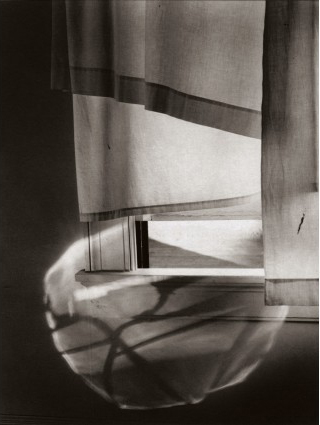
Windowsill Daydreaming, Rochester, New York, July 1958, Minor White, Platinum Palladium Print 9 1/2 x 7 1/2 inches

Migratory Cotton Picker, Eloy, Arizona, Dorothea Lange, 1940 Platinum Palladium Print 9 1/2 x 7 1/2 inches

Martha Graham, Lamentation (Oblique), Barbara Morgan 1935, Platinum Palladium Print, 9 1/2 x 7 1/2 inches
For further in information on
Anderson & Low visit : www.andersonandlow.com
Sal Lopes : http://lopesphotographs.com
Aperture foundation : http://www.aperture.org/
Stan Klimek : http://stanklimekstudio.com/
Platinum Print Editions : www.platinumprinteditions.com
‘Virginia Woolf – Art, Life & Vision’ Platinum Prints
July 10, 2014
The second set of platinum prints to be co-published by our studio’s imprint Platinum Print Editions and the National Portrait Gallery in 2014 coincides with the exhibition ‘Virginia Woolf, Art, Life & Vision’.
The set includes two iconic portraits of Woolf, who is widely regarded as one of the most important and celebrated writers of the twentieth century. The images were photographed by George Charles Beresford who specialised in platinotype portraits of writers, artists and politicians from 1902 to 1932.The National Portrait Gallery currently has in its archive the largest collection of glass plates and original negatives/prints of his work.
The platinum prints are available individually in an edition of 25 and as a Collectors set in an edition of 20. The Collectors set includes both portraits presented in a hand made silk covered portfolio with biographical text written by NPG curator Paul Moorhouse. Prints are mounted ready to be framed. Price increases as the edition sells. Each print is numbered and authenticated with the National Portrait Gallery & Platinum Print Editions stamp on the verso. No further editions will be printed.
Below ilustrates the layout of the Collectors Set :

Profile of Virginia Woolf I (1902), George Charles Beresford, Modern Platinum/Palladium print on Japanese Gampi paper (2014)
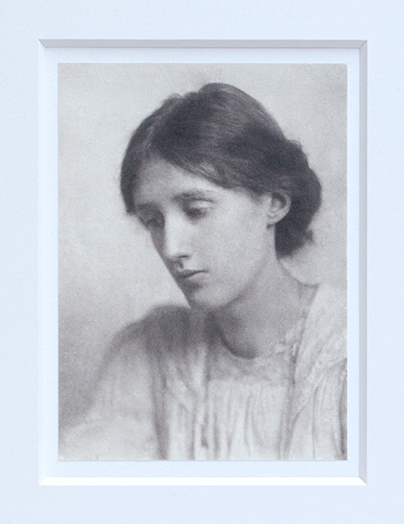
Profile of Virginia Woolf II (1902), George Charles Beresford, Modern Platinum/Palladium print on Japanese Gampi paper (2014)
The prints can be viewed in person at the National Portrait Gallery shop. To purchase the Collectors set online click here or as individual prints here.
For further sales information please email info@platinumprinteditions.com. Information regarding the next series of platinum prints to be published with the National Portrait Gallery will feature in upcoming posts.
The exhibition ‘Virginia Woolf, Art, Life & Vision’ runs from July-October 2014 and is curated by biographer and art historian Frances Spalding, the exhibition includes distinctive portraits of Woolf by her Bloomsbury Group contemporaries Vanessa Bell and Roger Fry and photographs by George Charles Beresford (shown above) and Man Ray, as well as intimate images recording her time spent with friends and family. Woolf’s early life and literary achievements, alongside lesser known aspects of her time in London and political views, are brought into focus through in-depth research and a remarkable array of personal objects including letters, diaries and books.
For further information about the exhibition visit http://www.npg.org.uk/whatson/virginiawoolf/home.php
To learn more about the first set of platinum prints to be co-published with the National Portrait Gallery click here
